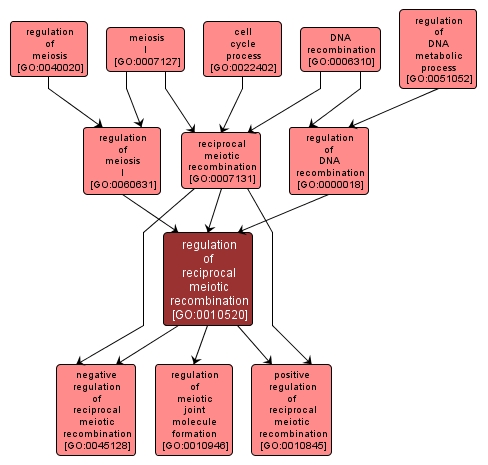GO TERM SUMMARY
|
| Name: |
regulation of reciprocal meiotic recombination |
| Acc: |
GO:0010520 |
| Aspect: |
Biological Process |
| Desc: |
Any process that modulates the frequency, rate or extent of recombination during meiosis. Reciprocal meiotic recombination is the cell cycle process whereby double strand breaks are formed and repaired through a double Holliday junction intermediate. |
|

|
INTERACTIVE GO GRAPH
|














